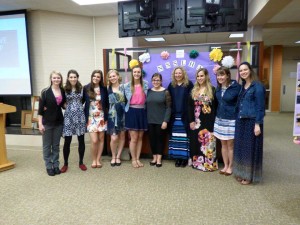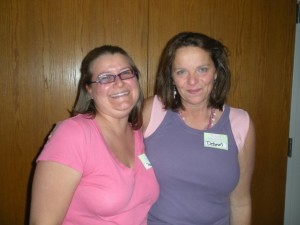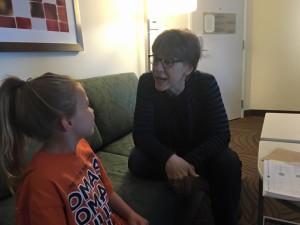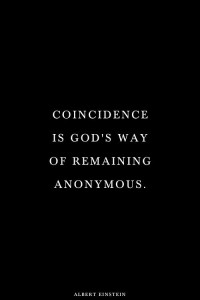Serendipity, coincidences, and Childhood Apraxia of Speech
I just gave a talk at Bowling Green University this past week.
Since the talk was to undergrads, I talked about my serendipitous journey to becoming an SLP, and why I am a firm believer in listening to “coincidences.” The talk then culminated with my story about meeting Ronda Rousey.
For my final slide, my takeaways were to believe in serendipity and to listen to coincidences. Life is more eerily connected than people think. Another perfect example happened tonight, but before I talk about tonight, it’s important to take you back to 2005.
Serendipity and coincidence found me in an SLPA (speech/language pathology assistant) position under the tutelage of an SLP named Deborah Comfort.
In 2005, I was starting my first year of graduate school thanks to her unrelenting push and unwavering belief that I should become an SLP; something I never planned on doing. That year, a 1st grade boy with apraxia showed up on her caseload and she wanted to refresh her knowledge. Knowing that kids with apraxia need more frequent therapy, she put the child on 3x a week, and I was partly assigned to her so I could provide the 3rd day of therapy, since she was only in the building 2x per week. She asked the principal to pay for an apraxia workshop coming to Denver and also requested I go as well since I would also be seeing the child. That workshop was given by Ruth Stoeckel out of the Mayo Clinic in Minnesota.
Fast forward to today, April 24th, 2016. A little over 10 years later. I have now have a daughter with apraxia and Deborah Comfort is her private SLP. Ruth was back out in Denver today because she is giving a talk to Children’s Hospital tomorrow, and I found myself at her hotel with my daughter Ashlynn.
How bazaar is that?
Pretty bazaar if you don’t believe in serendipity or listen to coincidences.
I met Ruth again when she was in Denver in 2013 for the Apraxia National Conference. I remember going up to her, stammering about how much I appreciated her and all of her work. She was having wine with friends and smiled politely at me before saying thank you and returning to her conversation.
Embarrassing!
That wasn’t the last I would see of Ruth though. I learned about CASANA’s apraxia intensive training institute while I was there, and (coincidentally) was accepted. Guess who was my mentor? Yup. Ruth.
Since that time she has entertained all my emails I have sent her that have had videos of Ashlynn accompanied by a paragraph of symptoms related to another neurological disorder called dysarthria. Ruth is not only an apraxia expert, but working at Mayo she is an expert in motor speech disorders, of which apraxia and dysarthria are both. I have always thought Ashlynn had dysarthria, but I have only known one child with it and he didn’t have apraxia. Ruth would know for sure. Ever the expert though, she would refrain from giving any sort of diagnosis over video.
A few months ago, after I sent her yet another question, she told me she would be coming to Denver again in April and would be willing to see Ashlynn while she was here.
The verdict?
Ashlynn has oral and verbal apraxia haha. Yes, I just laughed. Four years ago, I cried at that diagnosis.
What a difference those four years made.
She has expressive language disorder (yep) and word finding difficulties (double yep).
Ashlynn also has mild dysarthria. I nodded my head. I knew it all along. I just needed it confirmed by an expert who had actually seen it before in a child with apraxia.
Dysarthria is a tricky disorder. It can manifest in many different ways and in many different speech subsystems. In Ashlynn though, it is the cause for her messy eating, difficulty with managing her saliva, especially when she’s talking and it pools at the corner of her mouth, and some overall imprecision in her speech. Those are HER symptoms. However, that doesn’t mean every child who presents like that has dysarthria. (just my qualifying statement. Don’t dx over the internet!).
The treatment approach really isn’t that different at this point. Although, I did get GREAT tips for her residual errors. Ruth recommended to work on her residual artic errors now (even though language is a concern and seems to be the priority), because kids like Ashlynn are only getting these plans further ingrained in their system. That means I need to start working on the lisp now.
All that aside though, think about this for a minute. Humor me, if you will. More than ten years ago, I met a woman who would become my future daughter’s SLP. My future daughter, would have apraxia, the same disorder I was helping her future SLP treat in a young child, which brought us to a workshop given by Ruth Stoeckel, who is now seeing my child and is determining if she also has dysarthria.
Maybe it’s just me, but that seriously blows my mind.
What would I have said to 24 year old Laura? Childless Laura. Not yet an SLP Laura. Had I visited her from the future, could she have ever believed me if I told her she WOULD go to grad school some day. She would have a child, a child who would have apraxia. A child who, some ten years later, would be seen by the very expert giving a talk in the room she was in where she hearing about apraxia for the first time. A child who would be seeing the SLP sitting next to her on a weekly basis. That SLP, the sole person responsible for getting her (Laura) to college to get a degree in speech/pathology when she had NO intent of getting that degree.
I’ll say it again. That seriously blows my mind. I’ll quote Albert Einstein again,
Yes. Life is more eerily connected than we think.
If you follow my blog, you know now even more why I don’t believe in a coincidence, and why I went and met Ronda Rousey that fateful day.
I leave you with what I left the undergrads at Bowling Green:
- Believe in serendipity
- Listen to coincidences…and
- “When it comes to challenges, I honestly believe that things happen for a reason,” Rousey said. “At the time, yes, it’s hard on a personal [and] emotional level, and it’s hard to look past what’s happening to the future; but you have to believe in yourself – because down the line in two, five, ten years’ time, you’ll look back and think that was actually the best thing that ever happened to me.”



